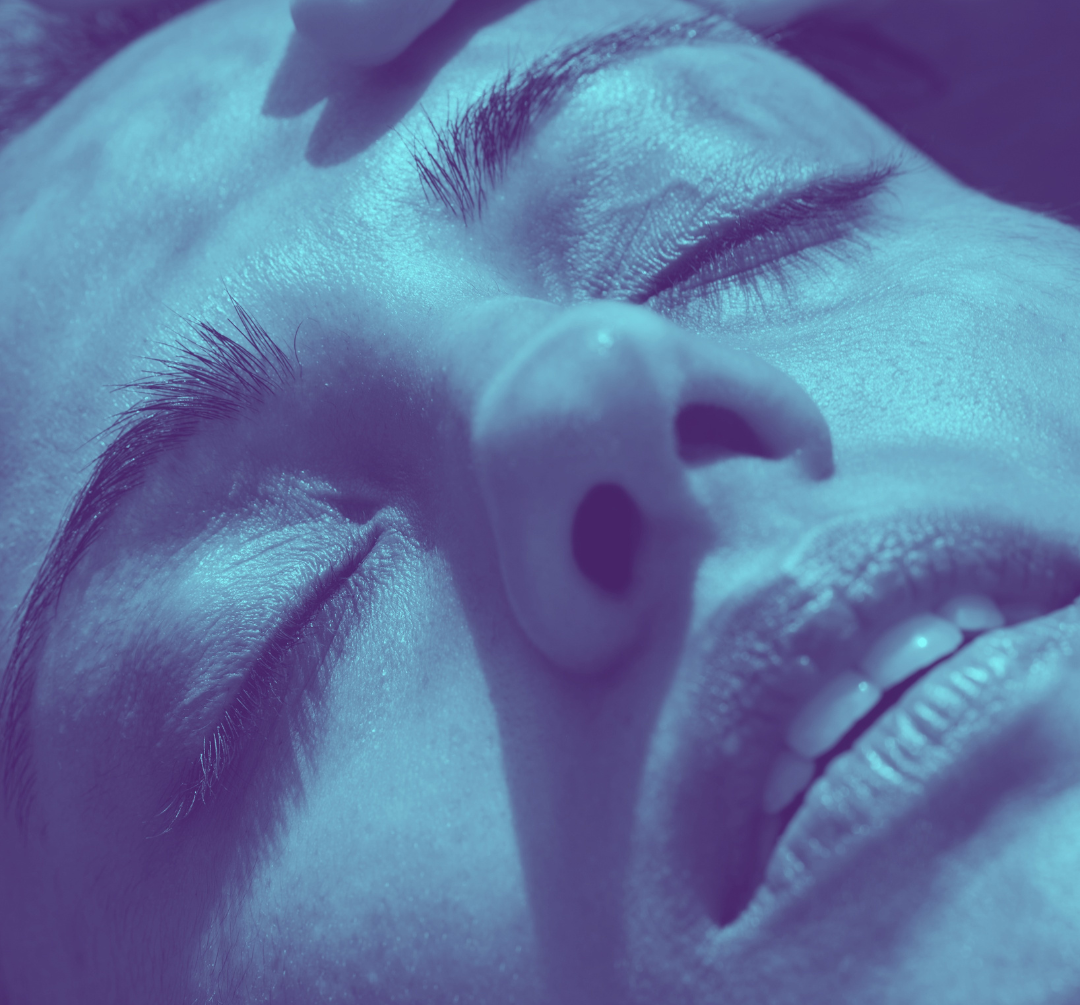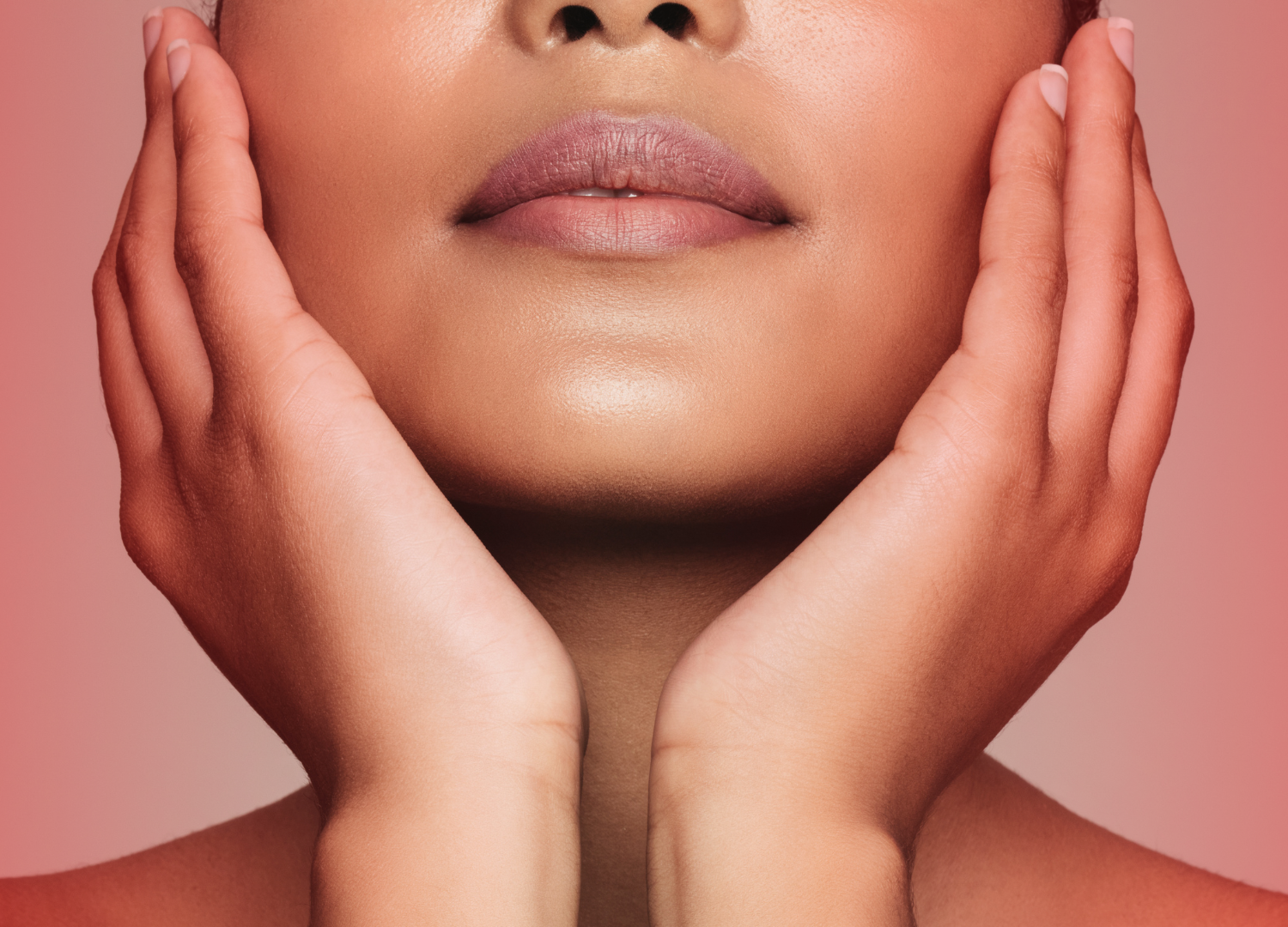LED light therapy has become a popular skin treatment in recent years, especially as at-home devices become more available. But LED lights can have different effects on the skin depending on the wavelength you use and the color of the light. Let’s take a look at the pros and cons of blue light therapy and it can help your skin.
Blue light therapy for skin
Most commonly, blue light therapy is used to treat sun damage and acne but also to prevent skin cancer and even depression. The light used is a natural violet or blue light that can help kill certain bacteria on the skin. This treatment is usually quick and painless: you’ll sit in a dark room at your doctor’s clinic with protective goggles on your eyes for anywhere from 15 to 90 minutes depending on the size of the area you are focusing on, while the light is working on your skin. Like red light therapy, blue light also has an anti-inflammatory and antiproliferative effect which makes it effective for skin conditions such as eczema, and psoriasis.
Benefits of blue light therapy for the skin
These are some of the things blue light therapy is most commonly used for. These blue light therapy benefits could be interesting to consider for your skin, especially if you are dealing with any of these conditions:
Acne
Acne is often caused by bacteria called Propionibacterium acnes, which lives on your skin and causes spots on your face. Who doesn’t want to get rid of that? Well this bacteria, as it happens, emits a photosensitizer, a product which makes it sensitive specifically to the blue wavelengths of light. This means blue light therapy for acne can help kill the bacteria and clear up spots and blemishes.
Beware though: it doesn’t work for every type of acne and it might take several sessions to find out if your acne reacts to blue light and if so, to treat it. Your doctor can advise you on how many sessions you will need. You can, of course, purchase an at-home blue light device but before you know if it works for your type of acne, it may be a waste of money. Plus, the devices in the doctor’s office are more powerful than those you can buy for at-home use.
Sun damage
It’s no secret that exposure to the sun’s UV rays damages your skin, even if you don’t see any signs of it immediately. It may take years to notice the small dark patches on your skin. known as sun spots. While they are not immediately dangerous, they can serve as a warning sign: they are what is referred to as precancerous spots and you must treat them.
When it comes to sun damage, blue light therapy is used in combination with a medication the doctor applies to your skin. It usually has to stay on for about an hour before treatment and once the blue light is applied, the photosensitive chemicals in the medication destroy the precancerous elements.
Skin Cancer
As described for sun damage, blue light combined with a photosensitive topical medical can help kill precancerous and cancerous skin cells. Treatments have shown great effects but you’ll probably need to repeat the treatment two or three times for full benefits.
Depression
The blue light therapy benefits, believe it or not, also extend to mental health as it can be used as a treatment for depression, especially when it comes with seasonal patterns, known as Seasonal Affective Disorder. You may have experienced it on gray and rainy winter days, or during the COVID-19 crisis, while spending all the time indoors. That’s right: blue light literally can literally help with feeling blue! In these cases, it can be beneficial to buy an LED blue light therapy device for at home use, so you can reach for it easily when needed.
Besides this, you can also use your blue light device along with other skin technologies such as Radiofrequency therapy devices, which help with collagen boosting and wrinkle reduction.
One such device is the NEWA RF wrinkle reduction device, a compact clinical-grade technology that’s FDA-cleared and helps boost your skin’s natural production of collagen. Just like with larger in-clinic RF machines, the electrodes on the NEWA device generate radio waves when in contact with the skin. And there is proof it works. According to a clinical study submitted to the FDA with individuals who used NEWA over a period of three months (3 times a week for the first 4 weeks and twice a week for the remaining 8 weeks), the NEWA RF results are clear: 100% of participants showed improvement in overall wrinkle appearance. In addition, 84% showed improvement in skin firmness and 75.6% showed an increase in skin collagen content. No wonder some 300,000 people worldwide have already made it a part of their skincare routine.
What are the risks and side effects of blue light therapy?
Ok, so we know there is a lot to gain from this treatment but how safe is blue light therapy? While the blue light therapy side effects are minimal, there are important things to consider. Blue light therapy is considered generally safe but is definitely not recommended for people with photosensitivity disorders or conditions that cause sensitivity to the sun.
Other than that, after a blue light treatment you may experience some Irritation, redness, or that same feeling you get from a sunburn. Your skin will also be sensitive to sunlight for a few days after treatment so it’s important to use your SPF (Which we hope you are always using!) and other sun protection methods in addition to avoiding outdoor activities. If medicine was applied to your skin before treatment you’ll have to be extra careful: sunscreen doesn’t help with photosensitivity.
In short, there are no major side effects observed with blue light therapy, but there are no studies considering the long-term effects of blue light on the skin yet. So if you are using it long-term, make sure you are monitored by a professional.
Final words
In short, there are great ways in which Blue light therapy can benefit your skin whether you are dealing with acne, sun damage, skin cancer, depression or other skin conditions like eczema and psoriasis. There are minimal risks but the treatment does require some precautions and down time. As for at-home devices, they can be effective, but it depends on what you are using your blue light therapy for.
Sources used in the article:
uihc.orghealth.clevelandclinic.org
healthline.com
ncbi.nlm.nih.gov
ncbi.nlm.nih.gov
health.clevelandclinic.org
health.clevelandclinic.org
eastondermatology.com
eastondermatology.com
health.clevelandclinic.org
healthline.com
ncbi.nlm.nih.gov




